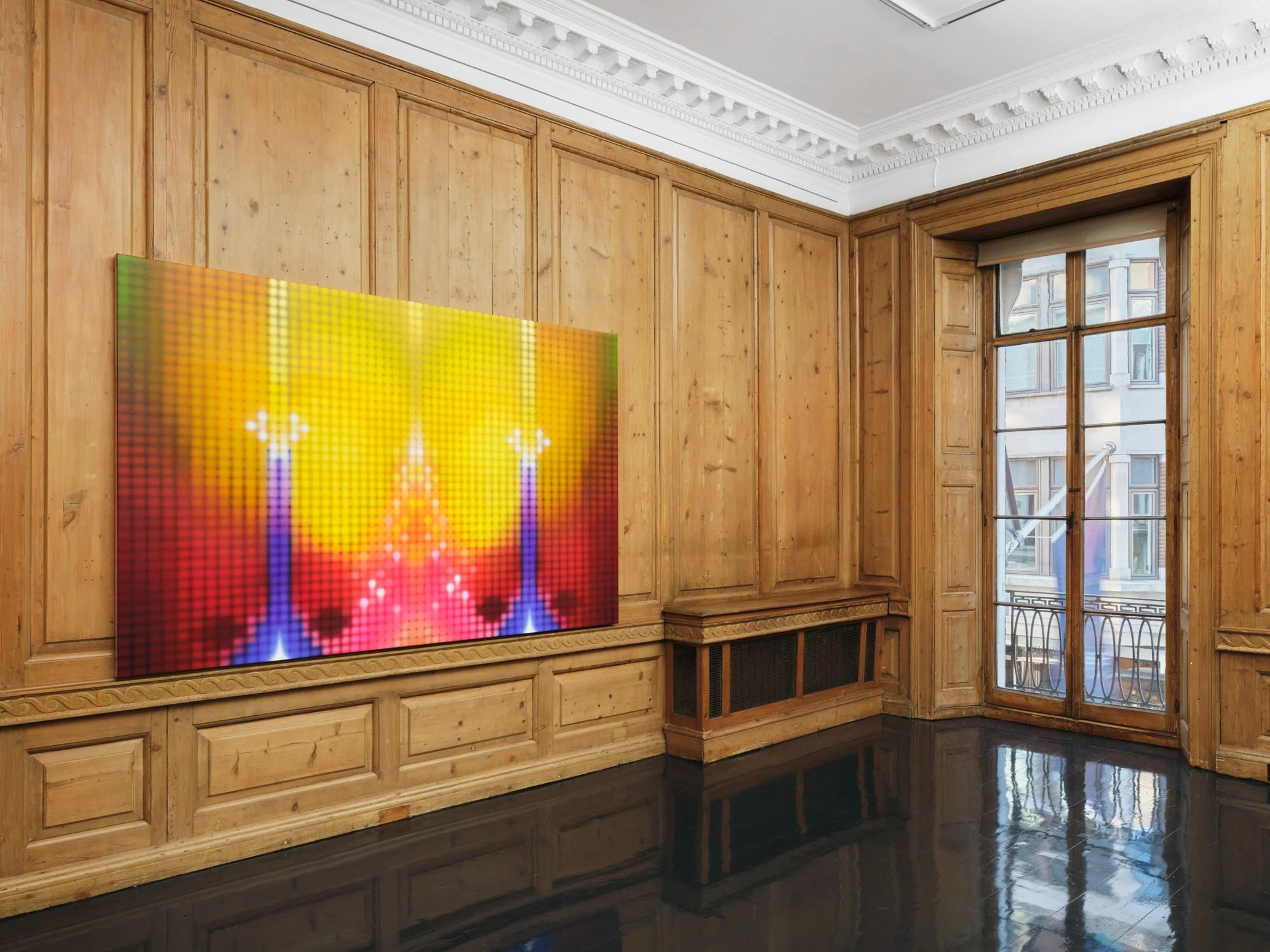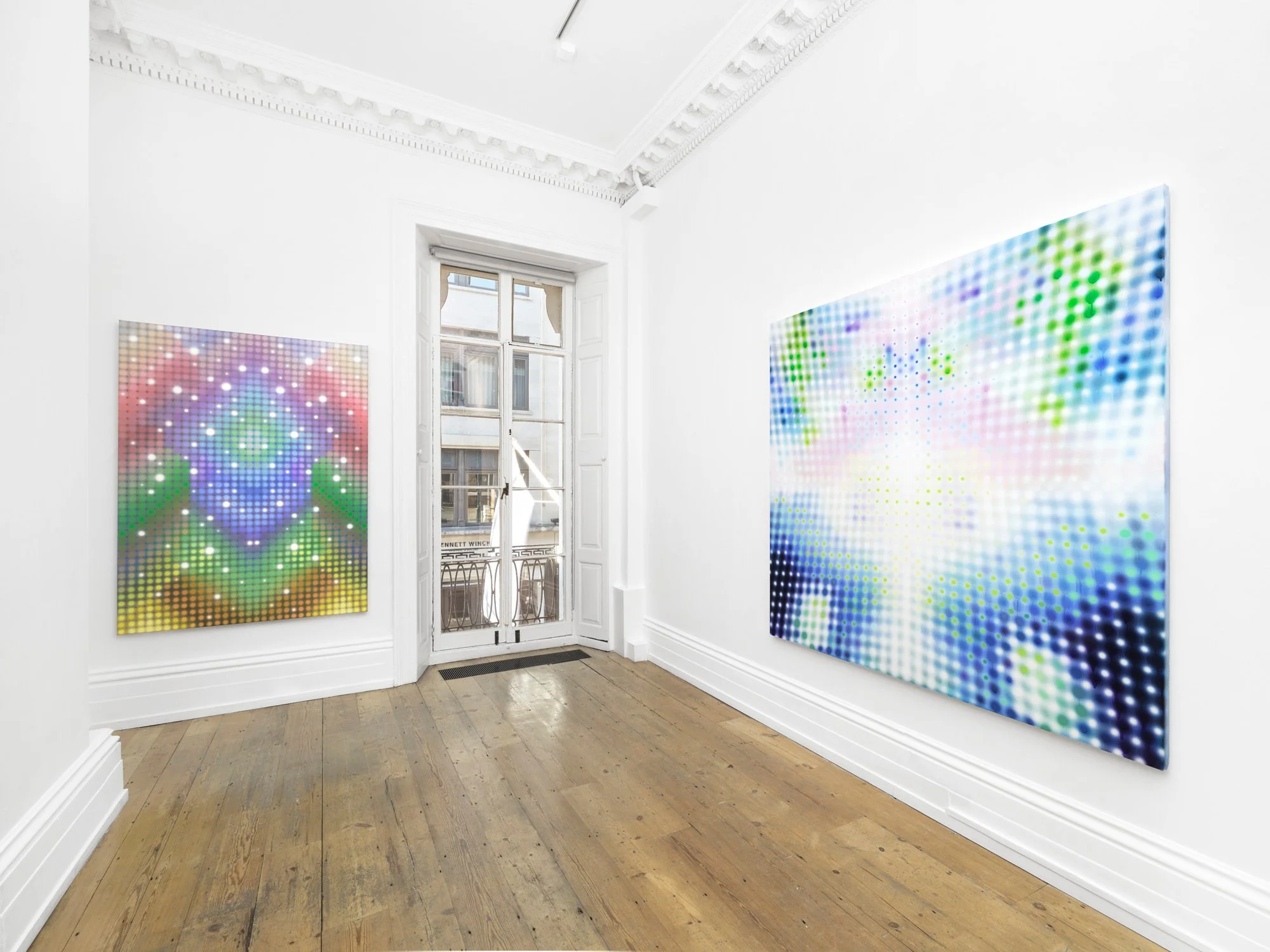LI SHURUI: ARTIFICIAL EMOTIONS
Carl Kostyál presents Artificial Emotions by Chinese artist Li Shurui at London. This is her second solo exhibition with the gallery, following her debut at Milan in 2020.
January 19 – February 17, 2024
Li Shurui, born in the 1980s, is among the first generation of China’s economic reforms. Upon graduating from the oil painting department of the Sichuan Fine Art Institute, one of China’s top art schools, in the early 2000s, she moved to the nation’s capital. Gearing up for the 2008 Beijing Olympic Games, the city’s urban landscape emanated thriving energy from ubiquitous construction sites and gigantic LED screens adorning high-rise buildings, coinciding with a time when electronic devices such as digital cameras, mobile phones, and personal computers began to popularize.
Using the digital camera to capture this energy while working as an artist’s assistant, her first painting, Light (2005), depicts the halo of artificial lighting against a dark background. Li’s inclination has always been to render a visual experience in her work that may elicit a physical reaction and even a psychological response in the viewer rather than represent a subject matter. With a digital camera, she began capturing the blinding LED lights throughout the city.
Many have initially misunderstood her works on canvas as Op Art; in fact, her approach may be, at best, described as photo-realist. She first photographs the dazzling dots of light on LED screens and then, based on the interactions of colors, recreates those color and spatial effects with an airbrush on canvas. Instead of inventing a visual icon that many painters repeatedly represent, Li discovered a model that may contain many color schematics based on the laws of electromagnetic waves and the condition of various lighting, natural or artificial. Of course, light has played a fundamental role since the dawn of human civilization, from the invention of fire to electricity and now to the ubiquity of digital devices, which continue to transform our experience of color.
Other than works such as Glimmer of Joy after Deep Sleep, where the direction of color gradations suggests movement, the works on view in this exhibition present another constant factor in the natural world: symmetry. It is a motif found in ornamental art across many cultures as much as in the natural world phenomenon.
Einstein deemed symmetry the basis of fundamental law, and the world embodies harmonies. Our sense of harmony agrees with what nature likes to use in her construction of the world, the idea that symmetry and mathematical perfection provide the building principles of the world. Moreover, we associate symmetry with a sense of beauty and attractiveness.
As the physical and digital worlds continue to converge, new types of emotional relationships are emerging between humans and machines. Li Shurui’s practice, in her own words, is “a preliminary integration of the machines and AI” to encapsulate the ethos of our time for future generations.


